Solar System: Things To Know This Week
Solar System: Things to Know This Week
Learn about the science of photonics to create space communications, get updates on Juno, mining data from Voyager for new discoveries and more.

1. Carried on a Beam of Light
One of our major priorities is to make space communications more efficient. While our communications systems have matured over the decades, they still use the same radio-frequency system developed in the earliest days of the agency. After more than 50 years, we’re investing in new ways to increase data rates while also finding more efficient communications systems. Photonics–generating, detecting and manipulating particles of light–may provide the solution.
+ See how it works

2. It’s No Joke: Two New Moons for the Seventh Planet
Voyager 2 spacecraft flew by Uranus 30 years ago, but researchers are still making discoveries using the data it gathered. A new study led by University of Idaho researchers suggests there could be two tiny, previously undiscovered moonlets orbiting near two of the planet’s rings.
+ Find out how they were discovered

3. Vortex of Mystery
As southern winter solstice approaches in the Saturn system, our Cassini spacecraft has revealed dramatic seasonal changes in the atmospheric temperature and composition of Saturn’s largest moon, Titan. Winter is taking a grip on Titan’s southern hemisphere, and a strong, whirling vortex has intensified in the upper atmosphere over the south pole.
+See more

4. The Spiders of Mars
Ten thousand volunteers viewing images of Martian south polar regions have helped identify targets for closer inspection, yielding new insights about seasonal slabs of frozen carbon dioxide and erosional features known as “spiders.” From the comfort of home, the volunteers have been exploring the surface of Mars by reviewing images from the Context Camera on our Mars Reconnaissance Orbiter and identifying certain types of seasonal terrains near Mars’ south pole.
+ Learn more and see how you can join in

7. Better Safe than Sorry
Juno entered safe mode last week and early indications are a software performance monitor induced a reboot of the spacecraft’s onboard computer. In this case, the safe mode turned off instruments and a few non-critical spacecraft components, and it confirmed the spacecraft was pointed toward the sun to ensure the solar arrays received power.The spacecraft acted as expected during the transition into safe mode, restarted successfully and is healthy. High-rate data has been restored, and the spacecraft is conducting flight software diagnostics. Meanwhile, the Juno science team continues to analyze returns from the first close Jupiter flyby on Aug. 27. Revelations so far include that Jupiter’s magnetic fields and aurora are bigger and more powerful than thought. Scientists have also had their first glimpse below the planet’s swirling cloud deck. The next close flyby is scheduled on Dec. 11, with all science instruments on.
+ Get the details
Discover the full list of 10 things to know about our solar system this week HERE.
Make sure to follow us on Tumblr for your regular dose of space: http://nasa.tumblr.com
More Posts from Maevetheeuropan and Others

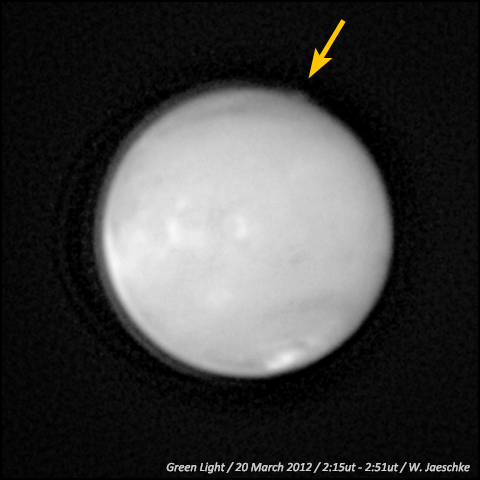
ARE MYSTERY MARS PLUMES CAUSED BY SPACE WEATHER?
Mysterious high-rise clouds seen appearing suddenly in the martian atmosphere on a handful of occasions may be linked to space weather, say Mars Express scientists.
Amateur astronomers using telescopes on Earth were the first to report an unusual cloud-like plume in 2012 that topped-out high above the surface of Mars at an altitude around 250 km.
The feature developed in less than 10 hours, covered an area of up to 1000 x 500 km, and remained visible for around 10 days.
The extreme altitude poses something of a problem in explaining the features: it is far higher than where typical clouds of frozen carbon dioxide and water are thought to be able to form in the atmosphere.
Indeed, the high altitude corresponds to the ionosphere, where the atmosphere directly interacts with the incoming solar wind of electrically charged atomic particles.
Speculation as to their cause has included exceptional atmospheric circumstances, auroral emissions, associations with local crustal anomalies, or a meteor impact, but so far it has not been possible to identify the root cause.
Unfortunately, the spacecraft orbiting Mars were not in the right position to see the 2012 plume visually, but scientists have now looked into plasma and solar wind measurements collected by Mars Express at the time.
They have found evidence for a large ‘coronal mass ejection’, or CME, from the Sun striking the martian atmosphere in the right place and at around the right time.
“Our plasma observations tell us that there was a space weather event large enough to impact Mars and increase the escape of plasma from the planet’s atmosphere,” says David Andrews of the Swedish Institute of Space Physics, and lead author of the paper reporting the Mars Express results.
“But we were not able to see any signatures in the ionosphere that we can categorically say were due to the presence of this plume.
“One problem is that the plume was seen at the day–night boundary, over a region of known strong crustal magnetic fields where we know the ionosphere is generally very disturbed, so searching for ‘extra’ signatures is rather challenging.”
To go further, the scientists have looked at the chances of these two relatively rare events – a large and fast CME colliding with Mars, and the mysterious plume – occurring at the same time.
They have been searching back through the archives for similar events, but they are rare.
For example, the Hubble Space Telescope observed a similar high plume in May 1997, and a CME was registered hitting Earth at the same time.
Although that CME was widely studied, there is no information from Mars orbiters to judge the scale of its impact at the Red Planet.

Mars Orbiter Mission: April 11, 2016 Clouds over Olympus Mons, April 11th 2016
Olympus Mons is a large shield volcano on the planet Mars. It has a height of nearly 22 km. Olympus Mons stands almost three times as tall as Mount Everest’s height above sea level. It is the youngest of the large volcanoes on Mars, having formed during Mars’s Amazonian Period. Several meteorological factors contribute to cloud formation. This MCC image was taken on April 11, 2016 at an altitude of 22,794 km and resolution of 1,185 meters. The image shows cloud around Olympus Mons Region.

Mars has many similarities to Earth. There are volcanoes, canyons, craters and - most importantly - water. Oh, and now NASA researchers have added another similarity to the list: ice ages.
Yup, thanks to radargrams taken from NASA’s Mars Reconnaissance Orbiter (MRO), scientists now have physical measurements that suggest Mars is actually just now emerging from an ice age that ended some 400,000 years ago. That’s quite the cold spell!
According to the team, researchers have previously predicted that the Red Planet experienced ice ages in the past using complex computer models, but they lacked actual measurements to back them up.

When Japan began to rebuild after the 2011 earthquake and tsunami, artist Manabu Ikeda started a massive pen & ink piece. He worked 10 hours a day, 6 days a week, for 3.5 years before finishing ‘Rebirth’, a 13x10 foot drawing of a tree rising from chaos and ruin. Source Source 2

Kate Rubins’ Space Station Science Scrapbook
As a child, Kate Rubins dreamed of being an astronaut and a scientist. During the past four months aboard the International Space Station, that dream came full circle. She became the first person to sequence DNA in space, among other research during her recent mission, adding to her already impressive experience. She holds a doctorate in molecular biology, and previously led a lab of 14 researchers studying viruses, including Ebola.

Here’s a look back at Rubins in her element, conducting research aboard your orbiting laboratory.
Kate inside Destiny, the U.S. Laboratory Module
The U.S. national laboratory, called Destiny, is the primary research laboratory for U.S. payloads, supporting a wide range of experiments and studies contributing to health, safety, and quality of life for people all over the world.

Destiny houses the Microgravity Science Glovebox (MSG), in which Kate worked on the Heart Cells experiment.
Swabbing for Surface Samples
Microbes that can cause illness could present problems for current and future long duration space missions.

Understanding what microbe communities thrive in space habitats could help researchers design antimicrobial technology. Here, Kate is sampling various surfaces of the Kibo module for the Microbe-IV investigation.
Culturing Beating Heart Cells in Space
The Heart Cells investigation uses human skin cells that are induced to become stem cells, which can then differentiate into any type of cell.

Researchers forced the stem cells to grow into human heart cells, which Rubins cultured aboard the space station for one month.

Rubins described seeing the heart cells beat for the first time as “pretty amazing. First of all, there’s a few things that have made me gasp out loud up on board the [space] station. Seeing the planet was one of them, but I gotta say, getting these cells in focus and watching heart cells actually beat has been another pretty big one.”
Innovative Applied Research Experiment from Eli Lilly
The Hard to Wet Surfaces investigation from Eli Lilly, and sponsored by the Center for the Advancement of Science in Space (CASIS), looks at liquid-solid interactions and how certain pharmaceuticals dissolve, which may lead to more potent and effective medicines in space and on Earth.

Rubins set up vials into which she injected buffer solutions and then set up photography to track how tablets dissolved in the solution in microgravity.
Capturing Dragon
Rubins assisted in the capture of the SpaceX Dragon cargo spacecraft in July. The ninth SpaceX resupply mission delivered more than two thousand pounds of science to the space station.

Biological samples and additional research were returned on the Dragon spacecraft more than a month later.
Sliding Science Outside the Station
Science doesn’t just happen inside the space station. External Earth and space science hardware platforms are located at various places along the outside of the orbiting laboratory.

The Japanese Experiment Module airlock can be used to access the JEM Exposed Facility. Rubins installed the JEM ORU Transfer Interface (JOTI) on the JEM airlock sliding table used to install investigations on the exterior of the orbiting laboratory.
Installing Optical Diagnostic Instrument in the MSG
Rubins installed an optical diagnostic instrument in the Microgravity Science Glovebox (MSG) as part of the Selective Optical Diagnostics Instrument (SODI-DCMIX) investigation. Molecules in fluids and gases constantly move and collide.

When temperature differences cause that movement, called the Soret effect, scientists can track it by measuring changes in the temperature and movement of mass in the absence of gravity. Because the Soret effect occurs in underground oil reservoirs, the results of this investigation could help us better understand such reservoirs.
The Sequencing of DNA in Space
When Rubins’ expedition began, DNA had never been sequenced in space. Within just a few weeks, she and the Biomolecule Sequencer team had sequenced their one billionth “base” – the unit of DNA - aboard the orbiting laboratory.

The Biomolecule Sequencer investigation seeks to demonstrate that DNA sequencing in microgravity is possible, and adds to the suite of genomics capabilities aboard the space station.
Studying Fluidic Dynamics with SPHERES
The SPHERES-Slosh investigation examines the way liquids move inside containers in a microgravity environment. The phenomena and mechanics associated with such liquid movement are still not well understood and are very different than our common experiences with a cup of coffee on Earth.

Rockets deliver satellites to space using liquid fuels as a power source, and this investigation plans to improve our understanding of how propellants within rockets behave in order to increase the safety and efficiency of future vehicle designs. Rubins conducted a series of SPHERES-Slosh runs during her mission.
Retrieving Science Samples for Their Return to Earth
Precious science samples like blood, urine and saliva are collected from crew members throughout their missions aboard the orbiting laboratory.

They are stored in the Minus Eighty-Degree Laboratory Freezer for ISS (MELFI) until they are ready to return to Earth aboard a Soyuz or SpaceX Dragon vehicle.
Measuring Gene Expression of Biological Specimens in Space
Our WetLab-2 hardware system is bringing to the space station the technology to measure gene expression of biological specimens in space, and to transmit the results to researchers on Earth at the speed of light.

Rubins ran several WetLab-2 RNA SmartCycler sessions during her mission.
Studying the First Expandable Habitat Module on the Space Station
The Bigelow Expandable Activity Module (BEAM) is the first expandable habitat to be installed on the space station. It was expanded on May 28, 2016.

Expandable habitats are designed to take up less room on a spacecraft, but provide greater volume for living and working in space once expanded. Rubins conducted several evaluations inside BEAM, including air and surface sampling.
Better Breathing in Space and Back on Earth
Airway Monitoring, an investigation from ESA (the European Space Agency), uses the U.S. airlock as a hypobaric facility for performing science. Utilizing the U.S. airlock allows unique opportunities for the study of gravity, ambient pressure interactions, and their effect on the human body.

This investigation studies the occurrence and indicators of airway inflammation in crew members, using ultra-sensitive gas analyzers to evaluate exhaled air. This could not only help in spaceflight diagnostics, but that also hold applications on earth within diagnostics of similar conditions, for example monitoring of asthma.
Hot Science with Cool Flames
Fire behaves differently in space, where buoyant forces are removed. Studying combustion in microgravity can increase scientists’ fundamental understanding of the process, which could lead to improvement of fire detection and suppression systems in space and on Earth.

Many combustion experiments are performed in the Combustion Integration Rack (CIR) aboard the space station. Rubins replaced two Multi-user Droplet Combustion Apparatus (MDCA) Igniter Tips as part of the CIR igniter replacement operations.
Though Rubins is back on Earth, science aboard the space station continues, and innovative investigations that seek to benefit humans on Earth and further our exploration of the solar system are ongoing. Follow @ISS_Research to keep up with the science happening aboard your orbiting laboratory.
Make sure to follow us on Tumblr for your regular dose of space: http://nasa.tumblr.com

For American science, the next four years look to be challenging. The newly inaugurated President Trump, and many of his Cabinet picks, have repeatedly cast doubt upon the reality of human-made climate change, questioned the repeatedly proven safety of vaccines. Since the inauguration, the administration has already frozen grants and contracts by the Environmental Protection Agency and gagged researchers at the US Department of Agriculture. Many scientists are asking themselves: What can I do?
And the answer from a newly formed group called 314 Action is: Get elected.

The organization, named after the first three digits of pi, is a political action committee that was created to support scientists in running for office. It’s the science version of Emily’s List, which focuses on pro-choice female candidates, or VoteVets, which backs war veterans. “A lot of scientists traditionally feel that science is above politics but we’re seeing that politics is not above getting involved in science,” says founder Shaughnessy Naughton.
“We’re losing, and the only way to stop that is to get more people with scientific backgrounds at the table.”
(Continue Reading)

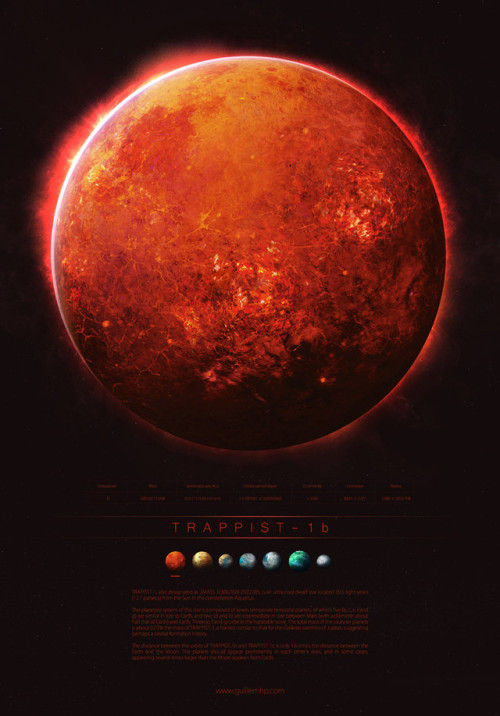
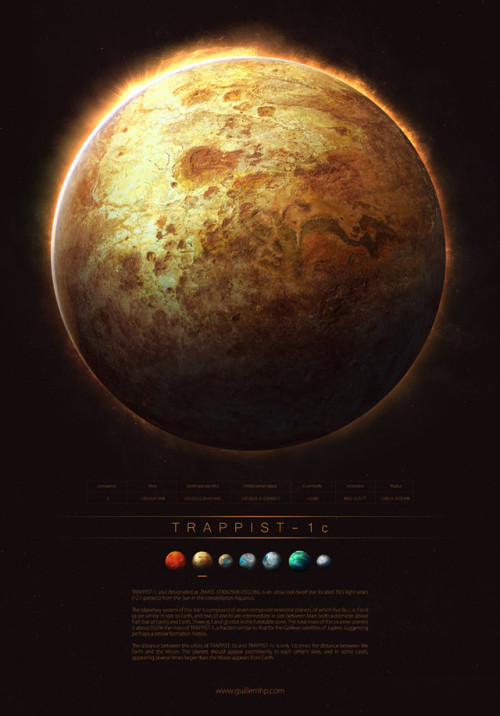
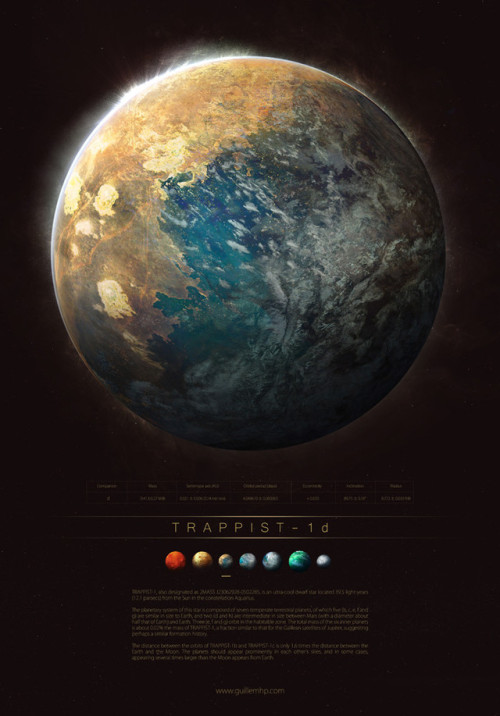
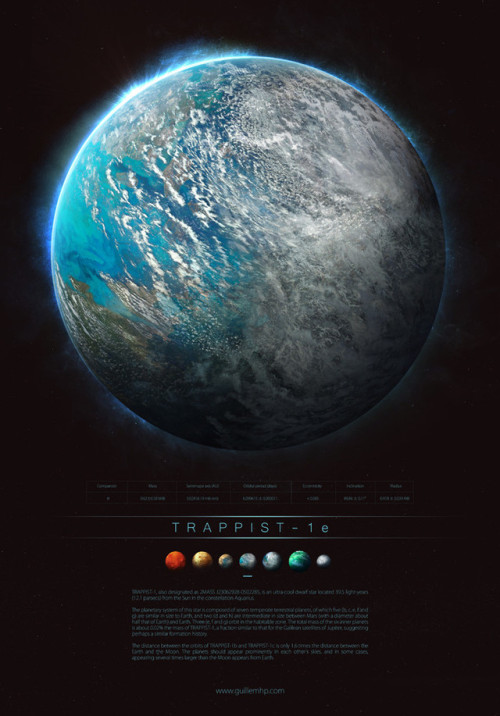
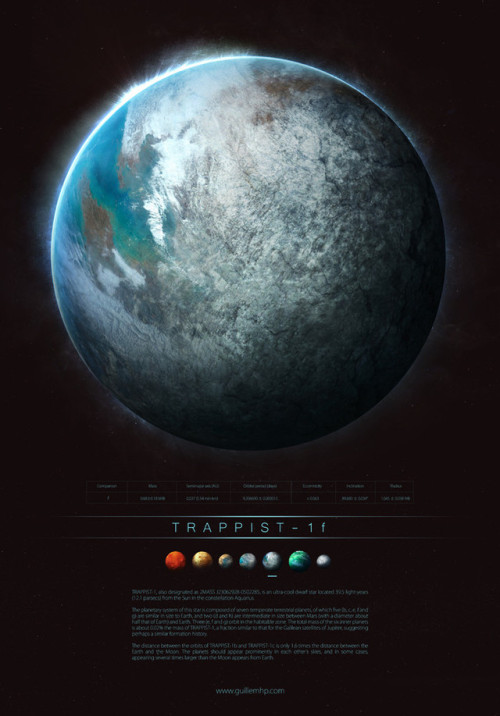

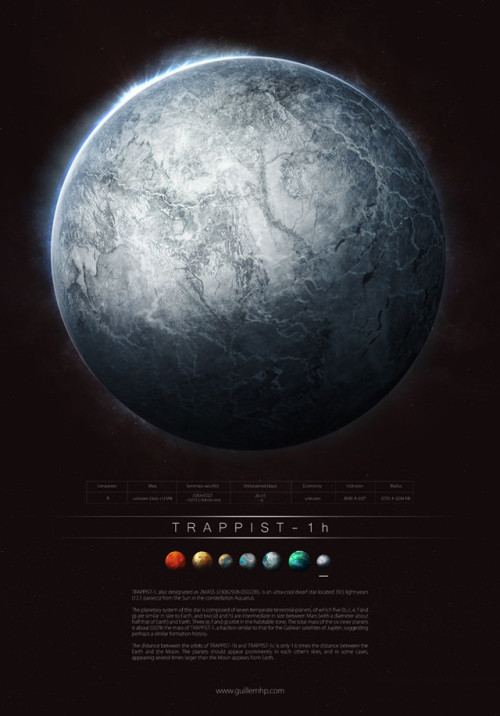
TRAPPIST - 1 by Guillem H. Pongiluppi
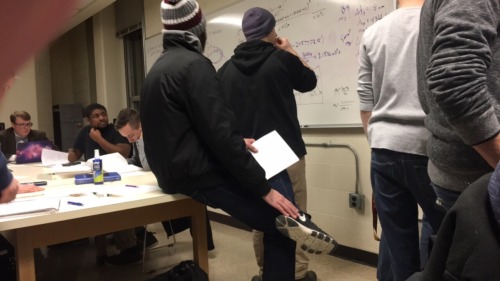


The beautiful chaos of watching 12 frantic astrophysics students try to save a theoretical astronaut from falling into a black hole. I’ve never seen a group of people work so quickly and efficiently before.


POTENTIAL HABITATS FOR EARLY LIFE ON MARS
Recently discovered evidence of carbonates beneath the surface of Mars points to a warmer and wetter environment in that planet’s past. The presence of liquid water could have fostered the emergence of life.
A new study by James Wray at the Georgia Institute of Technology and Janice Bishop of the SETI Institute, as well as other collaborators, has found evidence for widespread buried deposits of iron- and calcium-rich Martian carbonates, which suggests a wetter past for the Red Planet.
“Identification of these ancient carbonates and clays on Mars represents a window into history when the climate on Mars was very different from the cold and dry desert of today,” notes Bishop.
The fate of water on Mars has been energetically debated by scientists because the planet is currently dry and cold, in contrast to the widespread fluvial features that etch much of its surface. Scientists believe that if water did once flow on the surface of Mars, the planet’s bedrock should be full of carbonates and clays, which would be evidence that Mars once hosted habitable environments with liquid water. Researchers have struggled to find physical evidence for carbonate-rich bedrock, which may have formed when carbon dioxide in the planet’s early atmosphere was trapped in ancient surface waters. They have focused their search on Mars’ Huygens basin.
This feature is an ideal site to investigate carbonates because multiple impact craters and troughs have exposed ancient, subsurface materials where carbonates can be detected across a broad region. And according to study led James Wray, “outcrops in the 450-km wide Huygens basin contain both clay minerals and iron- or calcium-rich carbonate-bearing rocks.”
The study has highlighted evidence of carbonate-bearing rocks in multiple sites across Mars, including Lucaya crater, where carbonates and clays 3.8 billion years old were buried by as much as 5 km of lava and caprock.
The researchers, supported by the SETI Institute’s NASA Astrobiology Institute (NAI) team, identified carbonates on the planet using data from the Compact Reconnaissance Imaging Spectrometer for Mars (CRISM), which is on the Mars Reconnaissance Orbiter. This instrument collects the spectral fingerprints of carbonates and other minerals through vibrational transitions of the molecules in their crystal structure that produce infrared emission. The team paired CRISM data with images from the High Resolution Imaging Science Experiment (HiRISE) and Context Camera (CTX) on the orbiter, as well as the Mars Orbiter Laser Altimeter (MOLA) on the Mars Global Surveyor, to gain insights into the geologic features associated with carbonate-bearing rocks.
The extent of the global distribution of martian carbonates is not yet fully resolved and the early climate on the Red Planet is still subject of debate. However, this study is a forward step in understanding the potential habitability of ancient Mars.
Preview of paper: http://onlinelibrary.wiley.com/doi/10.1002/2015JE004972/abstract
TOP IMAGE….Ancient layered clay-bearing bedrock (top left) and carbonate bedrock (bottom right) are exposed in the central uplift of an unnamed crater approximately 42 kilometers in diameter in eastern Hesperia Planum, Mars. The image was taken by the High Resolution Imaging Science Experiment (HiRISE) instrument aboard the Mars Reconnaissance Orbiter. Credit: NASA/JPL/University of Arizona
LOWER IMAGE….Aeolian bed forms overlie ancient layered, ridged carbonate-rich outcrop exposed in the central pit of Lucaya crater, northwest Huygens basin, Mars. The image was taken by the High Resolution Imaging Science Experiment (HiRISE) instrument aboard the Mars Reconnaissance Orbiter. Credit: NASA/JPL/University of Arizona
-
 lyrastardreams reblogged this · 5 years ago
lyrastardreams reblogged this · 5 years ago -
 haxosto-blog liked this · 7 years ago
haxosto-blog liked this · 7 years ago -
 best-hotels-posts reblogged this · 8 years ago
best-hotels-posts reblogged this · 8 years ago -
 best-hotels-posts reblogged this · 8 years ago
best-hotels-posts reblogged this · 8 years ago -
 sanyairana liked this · 8 years ago
sanyairana liked this · 8 years ago -
 fals-ehopes liked this · 8 years ago
fals-ehopes liked this · 8 years ago -
 marinepeony liked this · 8 years ago
marinepeony liked this · 8 years ago -
 isobela1 liked this · 8 years ago
isobela1 liked this · 8 years ago -
 alicerobertstext reblogged this · 8 years ago
alicerobertstext reblogged this · 8 years ago -
 catsandwildlife liked this · 8 years ago
catsandwildlife liked this · 8 years ago -
 satancchisama liked this · 8 years ago
satancchisama liked this · 8 years ago -
 the-happiest-pessimist reblogged this · 8 years ago
the-happiest-pessimist reblogged this · 8 years ago -
 selendra-is-moving reblogged this · 8 years ago
selendra-is-moving reblogged this · 8 years ago -
 phoenixiancrystallist reblogged this · 8 years ago
phoenixiancrystallist reblogged this · 8 years ago -
 mirror-wolf reblogged this · 8 years ago
mirror-wolf reblogged this · 8 years ago -
 phoenixiancrystallist liked this · 8 years ago
phoenixiancrystallist liked this · 8 years ago -
 socialistweeaboo liked this · 8 years ago
socialistweeaboo liked this · 8 years ago -
 sylvermyth reblogged this · 8 years ago
sylvermyth reblogged this · 8 years ago -
 gravityinglass reblogged this · 8 years ago
gravityinglass reblogged this · 8 years ago -
 cysteinechapels reblogged this · 8 years ago
cysteinechapels reblogged this · 8 years ago -
 everythng-you-are liked this · 8 years ago
everythng-you-are liked this · 8 years ago -
 mcm-curiosity liked this · 8 years ago
mcm-curiosity liked this · 8 years ago -
 thegreatdreadpirate-roberts reblogged this · 8 years ago
thegreatdreadpirate-roberts reblogged this · 8 years ago -
 magmatron reblogged this · 8 years ago
magmatron reblogged this · 8 years ago -
 magmatron liked this · 8 years ago
magmatron liked this · 8 years ago -
 rikuo86 liked this · 8 years ago
rikuo86 liked this · 8 years ago -
 somegiantmess liked this · 8 years ago
somegiantmess liked this · 8 years ago -
 biowarewolf reblogged this · 8 years ago
biowarewolf reblogged this · 8 years ago -
 kuroown liked this · 8 years ago
kuroown liked this · 8 years ago -
 cantfakethecake reblogged this · 8 years ago
cantfakethecake reblogged this · 8 years ago -
 sweettsubaki liked this · 8 years ago
sweettsubaki liked this · 8 years ago -
 idonthaveatum-blr reblogged this · 8 years ago
idonthaveatum-blr reblogged this · 8 years ago -
 squidpirate reblogged this · 8 years ago
squidpirate reblogged this · 8 years ago -
 slavicbeastie liked this · 8 years ago
slavicbeastie liked this · 8 years ago -
 cantfakethecake liked this · 8 years ago
cantfakethecake liked this · 8 years ago -
 bugzattack liked this · 8 years ago
bugzattack liked this · 8 years ago -
 sage-nebula reblogged this · 8 years ago
sage-nebula reblogged this · 8 years ago -
 asimplerbee liked this · 8 years ago
asimplerbee liked this · 8 years ago -
 marmolita reblogged this · 8 years ago
marmolita reblogged this · 8 years ago
